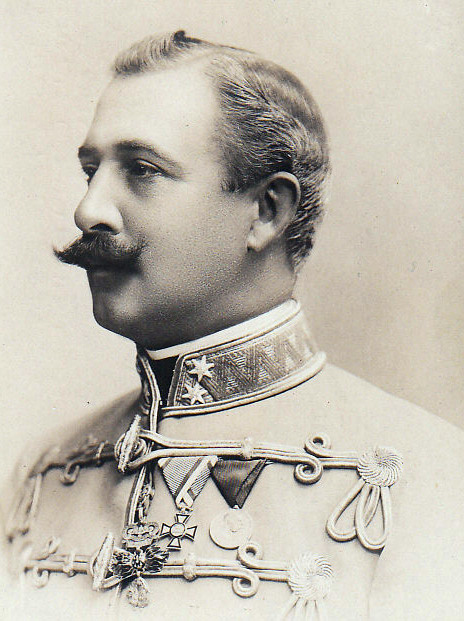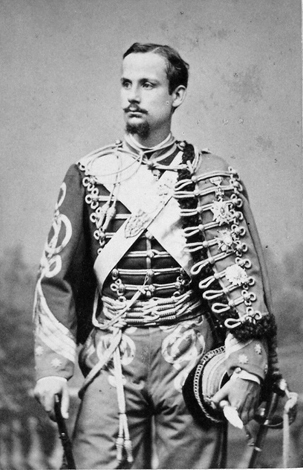compiled by Susan Flantzer
Tuberculosis is an infectious disease caused by a bacteria. It usually affects the lungs but can also affect other parts of the body. Tuberculosis is spread through the air when people who have active tuberculosis cough, spit, speak, or sneeze. The classic symptoms are a chronic cough with bloody mucus, fever, night sweats, and weight loss. It was historically called consumption due to the weight loss. If left untreated, tuberculosis kills about half of those affected. In Europe, rates of tuberculosis began to rise in the early 1600s to a peak level in the 1800s, when it caused nearly 25% of all deaths.
This does not purport to be a complete list. All images are from Wikipedia unless otherwise indicated.
*********************
Jacqueline of Bavaria, Countess of Holland, Zeeland and Hainaut

- Born: July 15, 1401 in Le Quesnoy, County of Hainaut, now in France
- Parents: Wilhelm II, Duke of Bavaria and Margaret of Burgundy
- Married: (1) Jean, Dauphin of France in 1415 (2) John IV, Duke of Brabant in 1418, annulled 1422 (3) Humphrey, Duke of Gloucester in 1423, annulled 1428 (4) Frank van Borssele in 1434
- Died: October 8, 1436, aged 35, at Teylingen Castle in Voorhout, County of Holland, now in the Netherlands
- Buried: palace church at the Binnenhof in The Hague, County of Holland, now in the Netherlands
- Wikipedia: Jacqueline of Bavaria, Countess of Holland, Zeeland and Hainaut
Also known as Jacqueline of Hainaut, she was Countess of Holland, Zeeland and Hainaut in her own right. In 1436, she became ill with tuberculosis and died after a few months.
*********************
Isabella of Bourbon, Countess of Charolai
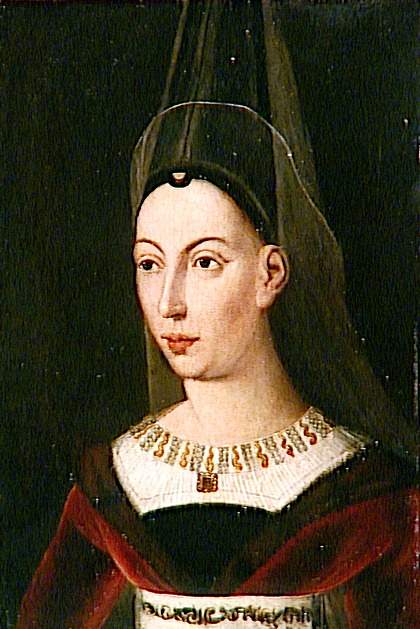
- Born: 1437
- Parents: Charles I, Duke of Bourbon and Agnes of Burgundy
- Married: Charles the Bold, Count of Charolais and the future Duke of Burgundy, in 1454
- Died: September 25, 1465, aged 31, at St. Michael’s Abbey in Antwerp, Flanders now in Belgium
- Buried: Cathedral of Our Lady of Antwerp in Antwerp, Flanders now in Belgium
- Wikipedia: Isabella of Bourbon, Countess of Charolai
Isabella was the mother of the great heiress Mary of Burgundy who was the Duchess of Burgundy in her own right after her father’s death. After several months of illness, Isabella died of tuberculosis.
*********************
Filberto I, Duke of Savoy
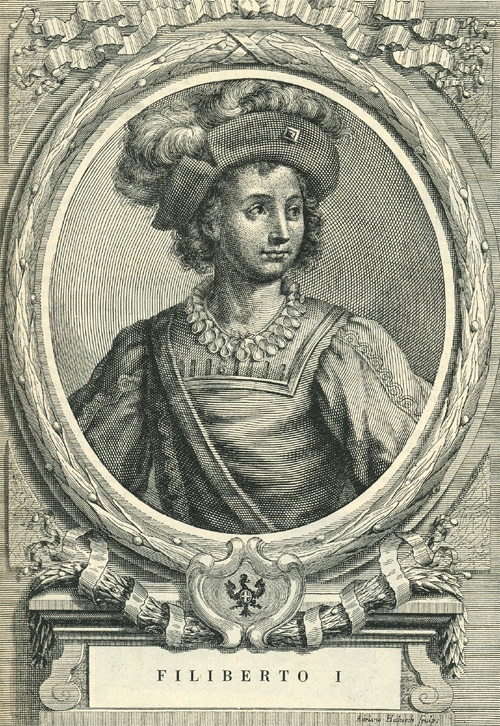
Born: August 17, 1465 in Chambéry, Duchy of Savoy, now in France
Parents: Amadeo IX, Duke of Savoy and Yolande of Valois
Married: Bianca Maria Sforza in 1476
Died: September 22, 1482, aged 17, in Lyon, Duchy of Burgundy, now in France
Buried: Hautcombe Abbey in Saint-Pierre-de-Curtille, Duchy of Savoy, now in France
Wikipedia: Filberto I, Duke of Savoy
Filberto died of tuberculosis. His burial place, Hautecombe Abbey, has been the burial place of the House of Savoy for centuries.
*********************
Lady Anne Neville, Queen of England

Born: June 11, 1456, at Warwick Castle in Warwickshire, England
Parents: Richard Neville, 16th Earl of Warwick and Lady Anne Beauchamp
Married: (1) Edward of Westminster, Prince of Wales (son of King Henry VI of England) in 1470 (2) King Richard III of England in 1472
Died: March 16, 1485, aged 28, at the Palace of Westminster in London, England
Buried: Westminster Abbey in London, England
Unofficial Royalty: Lady Anne Neville, Queen of England
Anne and Richard’s son Edward of Middleham, Prince of Wales, died at the age of ten. Anne survived her son by less than a year, dying of tuberculosis. Her husband Richard survived her by only five months, losing his crown and his life on August 22, 1485, in the Battle of Bosworth Field, defeated by Henry Tudor, who became King Henry VII of England.
*********************
King Henry VII of England

- Born: January 28, 1457 at Pembroke Castle in Wales
- Parents: Edmund Tudor, 1st Earl of Richmond and Lady Margaret Beaufort
- Married: Elizabeth of York, daughter of King Edward IV of England in 1486
- Died: April 21, 1509, aged 52, at Richmond Palace in Surrey, England
- Buried: Westminster Abbey in London, England
- Unofficial Royalty: King Henry VII of England
Henry’s health began to fail in 1507, and he suffered from attacks of gout and asthma. He died two years later from tuberculosis.
*********************
Henry FitzRoy, Duke of Richmond and Somerset

- Born: June 15, 1519 at the Augustinian Priory of St. Lawrence in Blackmore, Essex, England
- Parents: Henry VIII of England and his mistress Elizabeth Blount
- Married: Lady Mary Howard, daughter of Thomas Howard, 3rd Duke of Norfolk, in 1533
- Died: July 23, 1536, aged 17, in Thetford, Norfolk, England
- Buried: St. Michael’s Church in Framlingham, Suffolk, England, the burial place of the Howard family
- Unofficial Royalty: Henry FitzRoy, Duke of Richmond and Somerset
Henry was his father’s only acknowledged illegitimate child. He became sickly sometime before he died and was reported ill with consumption, a term used for tuberculosis.
*********************
Madeleine of Valois, Queen of Scots

- Born: August 10, 1520 at the Château de Saint-Germain-en-Laye in Saint-Germain-en-Laye, France
- Parents: King François I of France and Claude of France, Duchess of Brittany
- Married: James V, King of Scots (first wife)
- Died: July 7, 1537, aged 16, at Holyrood Palace in Edinburgh, Scotland
- Buried: Holyrood Abbey in Edinburgh, Scotland
- Unofficial Royalty: Madeleine of Valois, Queen of Scots
Scotland had signed a treaty with France to strengthen their alliance. One of the provisions was for James V, King of Scots to marry a French princess. When James V reached a marriageable age, talks began regarding marriage with Madeleine. However, Madeleine apparently had tuberculosis and her ill health was an issue and another French bride, Mary of Bourbon, was offered as a substitute. When James V came to France to meet Mary of Bourbon, he met Madeleine and decided to marry her. Because of his daughter’s health issues, King François I of France was reluctant to agree to the marriage, but eventually, he did so. Madeleine and James V were married on January 1, 1537, at Notre Dame Cathedral in Paris.
The couple arrived in Scotland on May 19, 1537, after months of celebrations in France, with Madeleine’s health having further deteriorated. Madeleine wrote a letter to her father on June 8, 1537, saying that she was feeling better and that her symptoms had subsided. Despite this, on July 7, 1537, Madeleine died from tuberculosis in her husband’s arms, a month short of her seventeenth birthday.
*********************
King Edward VI of England

- Born: October 12, 1537 at Hampton Court Palace in Middlesex, England
- Parents: King Henry VIII and Jane Seymour
- Died: July 6, 1553, aged 15, at Greenwich Palace in Greenwich, England
- Buried: Westminster Abbey in London, England
- Unofficial Royalty: King Edward VI of England
In January 1553, Edward became ill with a fever and cough that gradually worsened. It is probable that he had tuberculosis. By May 1553, the royal doctors had no hope that the king would recover. After great suffering, Edward died on July 6, 1553.
*********************
João Manuel, Prince of Portugal

- Born: January 2, 1554, aged 16, at Ribeira Palace in Lisbon, Portugal
- Parents: King João III of Portugal and Catherine of Austria
- Married: Joanna of Austria in 1552
- Died: January 2, 1554, aged 16, at Ribeira Palace in Lisbon, Portugal
- Buried: Jerónimos Monastery in Lisbon, Portugal
- Wikipedia: João Manuel, Prince of Portugal
João Manuel was the heir to the throne of Portugal. His seven elder brothers all predeceased him. Eighteen days after his death from tuberculosis, his wife gave birth to a son, the future King Sebastian I of Portugal.
*********************
Barbara of Austria, Duchess of Ferrara

- Born: April 30, 1539 in Vienna, Austria
- Parents: Ferdinand I, Holy Roman Emperor and Anna of Bohemia and Hungary
- Married: Alfonso II, Duke of Ferrara in 1565
- Died: September 19, 1572, aged 33, in Ferrara, Duchy of Ferrara, now in Italy
- Buried: Church of San Michele del Gesù in Ferrara, Duchy of Ferrara, now in Italy
- Wikipedia: Barbara of Austria, Duchess of Ferrara
Barbara had suffered from tuberculosis for six years before her death.
*********************
Cosimo II de’ Medici, Grand Duke of Tuscany

- Born: May 12, 1590 at the Palazzo Pitti in Florence, Grand Duchy of Tuscany, now in Italy
- Parents: Ferdinando I de’ Medici, Grand Duke of Tuscany and Christina of Lorraine
- Married: Maria Maddalena of Austria in 1608
- Died: February 28, 1621, aged 30, at the Palazzo Pitti in Florence, Grand Duchy of Tuscany, now in Italy
- Buried: Chapel of the Princes at the Basilica of San Lorenzo in Florence, Grand Duchy of Tuscany, now in Italy
- Wikipedia: Cosimo II de’ Medici, Grand Duke of Tuscany
Cosimo is known for having been the patron of the astronomer Galileo Galilei, his former tutor.
*********************
Anne Stuart

- Born: March 17, 1637 at St. James’s Palace in London, England
- Parents: King Charles I of England and Henrietta Maria of France
- Died: November 5, 1640, aged 3, at Richmond Palace, in Surrey, England
- Buried: Westminster Abbey in London, England
- Wikipedia: Anne Stuart
From her birth, Anne had never been in good health. She had fevers and near-constant coughs before developing tuberculosis.
*********************
Marie-Thérèse of France, Madame Royale

- Born: January 2, 1667 at the Château de Saint-Germain-en-Laye, in Saint-Germain-en-Laye, France
- Parents: King Louis XIV of France and Maria Theresa of Spain
- Died: March 1, 1672, aged 5, at the Château de Saint-Germain-en-Laye, in Saint-Germain-en-Laye, France
- Buried: Basilica of Saint-Denis near Paris, France
- Wikipedia: Marie-Thérèse of France, Madame Royale
Marie-Thérèse was the eldest surviving daughter of her parents and was given the honorific Madame Royale. Only one of her parents’ six children, Louis, Le Grand Dauphin, survived childhood and Louis predeceased his father.
*********************
Maria Anna Josepha of Austria, Electoral Princess of the Palatinate

- Born: December 30, 1654 in Regensburg, Duchy of Bavaria, now in Bavaria, Germany
- Parents: Ferdinand III, Holy Roman Emperor and Eleonora Gonzaga, Princess of Mantua
- Married: the future Johann Wilhelm II, Elector Palatine in 1678
- Died: April 14, 1689, aged 34, in Vienna, Austria
- Buried: Imperial Crypt at the Capuchin Church in Vienna, Austria
- Wikipedia: Maria Anna Josepha of Austria, Electoral Princess of the Palatinate
Maria Anna died from tuberculosis during a visit to the Imperial Court in Vienna.
*********************
Maria Luisa of Savoy, Queen of Spain

- Born: September 17, 1688 at the Royal Palace of Turin in Turin, Duchy of Savoy, now in Italy
- Parents: Vittorio Amadeo II, Duke of Savoy and Anne Marie d’Orléans
- Married: King Felipe V of Spain in 1701
- Died: February 14, 1714, aged 25, at the Royal Alcazar of Madrid in Madrid, Spain
- Buried: Royal Monastery of San Lorenzo de El Escorial in El Escorial, Spain
- Wikipedia: Maria Luisa of Savoy, Queen of Spain
Five months after giving birth to her last child, Maria Luisa died from tuberculosis.
*********************
Maria Amalia of Saxony, Queen of Spain

- Born: November 24, 1724 at Dresden Castle in Dresden, Electorate of Saxony, now in Saxony, Germany
- Parents: Augustus III, King of Poland, Elector of Saxony and Maria Josepha of Austria
- Married: King Carlos III of Spain in 1738
- Died: September 27, 1760, aged 35, at Buen Retiro Palace in Madrid, Spain
- Buried: Royal Monastery of San Lorenzo de El Escorial in El Escorial, Spain
- Wikipedia: Maria Amalia of Saxony, Queen of Spain
Just thirteen months after her husband became King of Spain, Maria Amalia died from tuberculosis.
*********************
Louis Joseph Xavier of France, Duke of Burgundy
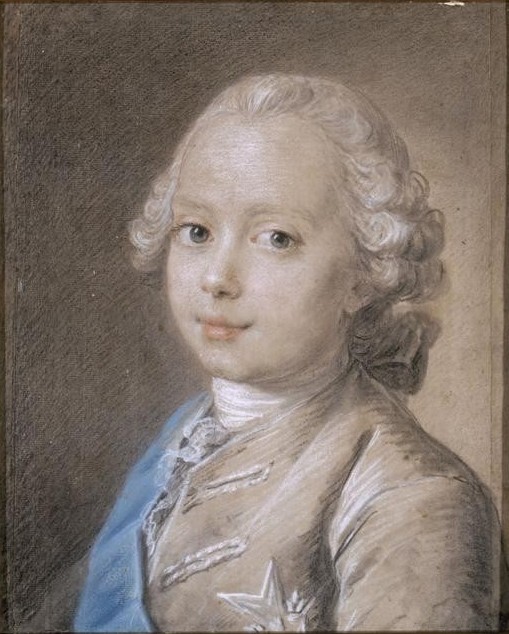
- Born: September 13, 1751 at the Palace of Versailles in Versailles, France
- Parents: Louis, Dauphin of France (son of King Louis XV of France) and Maria Josepha of Saxony
- Died: March 22, 1761, aged 9, at the Palace of Versailles in Versailles, France
- Buried: Basilica of Saint-Denis near Paris, France
- Wikipedia: Louis Joseph Xavier of France, Duke of Burgundy
Louis Joseph Xavier was the eldest son of his parents. Three of his younger brothers became Kings of France: the ill-fated Louis XVI and Louis XVIII and Charles X, who were kings during the Bourbon Restoration. After a fall, Louis Joseph Xavier’s health began to deteriorate. In 1760, he had surgery on his leg to remove a “tumor.” Afterward, he was bound to his bed, unable to move his legs, and diagnosed with extrapulmonary tuberculosis of the bone. After months of agony, Louis Joseph Xavier died. His father died from tuberculosis four years later. (See below.)
*********************
Louis, Dauphin of France

- Born: September 4, 1729 at the Palace of Versailles in Versailles, France
- Parents: King Louis XV of France and Marie Leszczyńska of Poland
- Married: (1) Infanta Maria Teresa Rafaela of Spain in 1744, died 1746 (2) Maria Josepha of Saxony in 1747
- Died: December 20, 1765, aged 36, at the Château de Fontainebleau in Fontainebleau, France
- Buried: Cathedral of Saint-Étienne in Sens, France (at his request)
- Unofficial Royalty: Louis, Dauphin of France
Unfortunately, like several other Dauphins that preceded him, Louis died prematurely and never became King of France. Until the summer of 1765, Louis was healthy. He then started to constantly cough, spit blood, and breathe with increasing difficulty. Tuberculosis was diagnosed. On November 13, 1765, Louis asked to receive the last rites. He managed to survive another month.
*********************
Sophie of France, Madame Sophie

- Born: July 9, 1786 at the Palace of Versailles in Versailles, France
- Parents: King Louis XVI of France and Maria Antonia of Austria (Marie Antoinette)
- Died: June 19, 1787, aged 11 months, at the Palace of Versailles in Versailles, France
- Buried: Basilica of Saint-Denis near Paris, France
- Wikipedia: Sophie of France
Sophie had fragile health since her birth and died from tuberculosis.
*********************
Louis Joseph, Dauphin of France

- Born: October 22, 1781 at the Palace of Versailles in Versailles, France
- Parents: King Louis XVI of France and Maria Antonia of Austria (Marie Antoinette)
- Died: June 4, 1789, aged 7, at the Château de Meudon in Meudon, France
- Buried: Basilica of Saint-Denis near Paris, France
- Wikipedia: Louis Joseph, Dauphin of France
Louis Joseph was his parents’ eldest son and the heir to the French throne. He began to be in ill health from the time he was three years old. In 1786, doctors realized that he was suffering from tuberculosis. His illness progressed and became quite serious in 1788. Louis Joseph died the next year. His younger brother Louis Charles (titular King Louis XVII of France), who died during the French Revolution, at the Temple prison became Dauphin of France.
*********************
Louis-Charles, Dauphin of France – Titular King Louis XVII of France
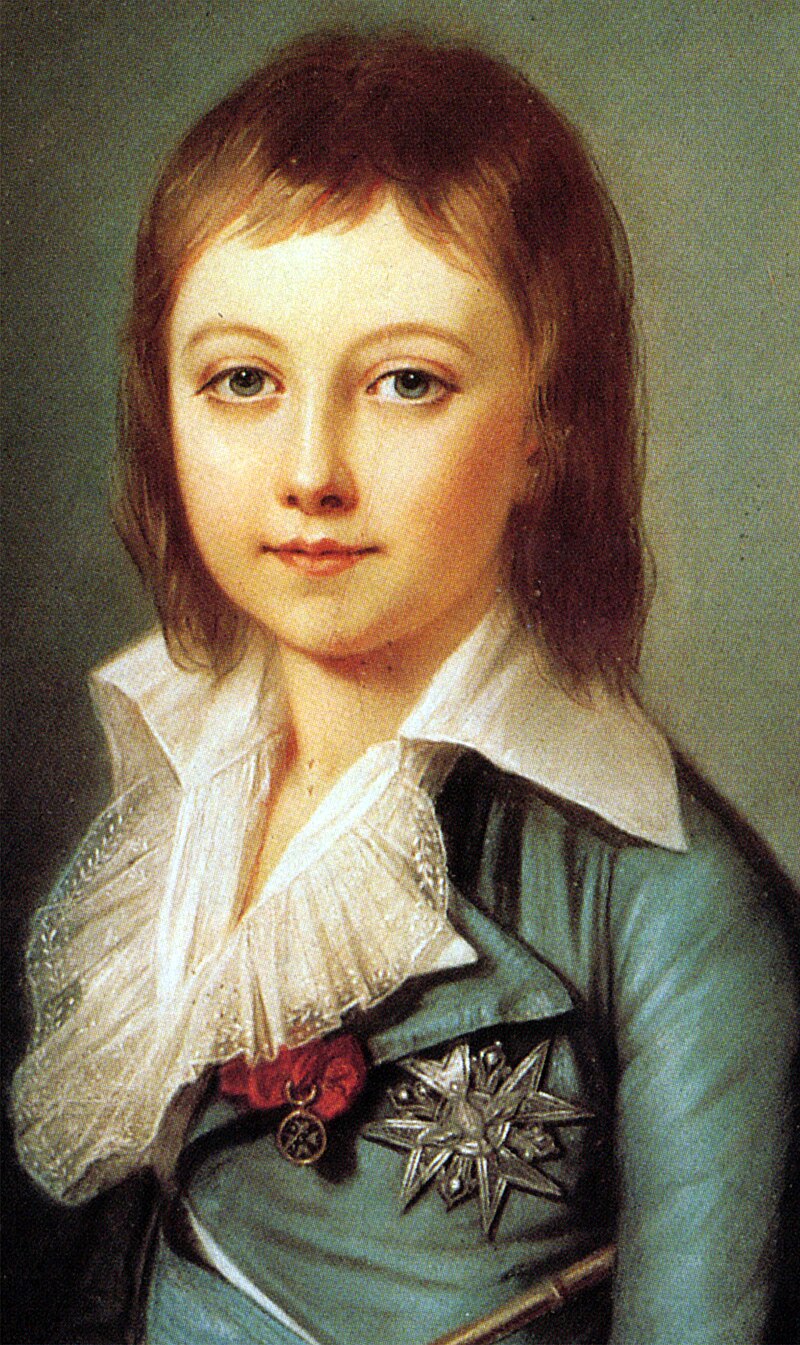
During the French Revolution, Louis-Charles was imprisoned at the Temple Prison with his sister Marie-Thérèse, his mother Marie Antoinette and Élisabeth, Louis XVI’s youngest sister. His mother and aunt were both executed and his sister survived the French Revolution. In 1793, three months before his mother’s execution, Louis-Charles was taken away from his family and placed in a solitary prison cell where he died two years later from tuberculosis.
*********************
Augusta Wilhelmine of Hesse-Darmstadt, Duchess of Zweibrücken
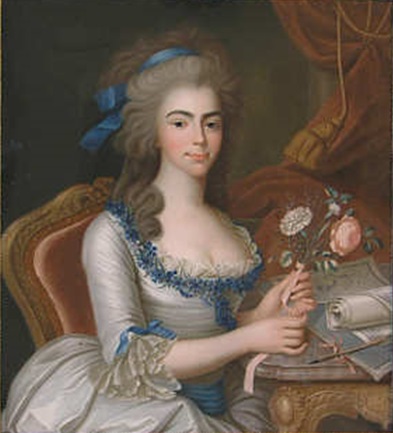
- Born: April 14, 1765 in Darmstadt, Landgraviate of Hesse-Darmstadt now in Hesse, Germany
- Parents: Prince Georg Wilhelm of Hesse-Darmstadt and Countess Maria Luise Albertine of Leiningen-Falkenburg-Dagsburg
- Married: Maximilian, Duke of Zweibrücken in 1785
- Died: March 30, 1796, aged 30, at Schloss Rohrbach near Heidelberg, then in the Palatinate, now in Baden-Württemberg, Germany
- Buried: Stadtkirche Darmstadt in Darmstadt, Landgraviate of Hesse-Darmstadt, now in Hesse, Germany.
- Unofficial Royalty: Augusta Wilhelmine of Hesse-Darmstadt, Duchess of Zweibrücken
Augusta Wilhelmine was the first wife of the future Maximilian I Joseph, King of Bavaria. She died before her husband became King of Bavaria but she did give birth to his heir, King Ludwig I of Bavaria. Maximilian Joseph served in the French Army until the French Revolution when he joined the Austrian Army. Because of the unrest at the time, his family had to flee their homes twice. Augusta Wilhelmine, weakened from five pregnancies and the travails of war, died from pulmonary tuberculosis.
*********************
Maria Antonia of Naples and Sicily, Princess of Asturias

- Born: December 14, 1784 at Royal Palace of Caserta in Caserta, Kingdom of Naples and Sicily, now in Italy
- Parents: King Ferdinand I of the Two Sicilies and Archduchess Maria Carolina of Austria
- Married: Ferdinand, Prince of Asturias (the future King Ferdinand VII) in 1802
- Died: May 21, 1806, ages, 21, at the Royal Palace of Aranjuez in Aranjuez, Spain
- Buried: Monastery of San Lorenzo de Escorial in El Escorial, Spain
- Unofficial Royalty: Maria Antonia of Naples and Sicily, Princess of Asturias
After her second miscarriage, Maria Antonia’s health deteriorated severely due to tuberculosis. She suffered severe pain until her death, nearly a year later.
*********************
Antoine Philippe of Orléans, Duke of Montpensier

- Born: July 3, 1775 at the Palais-Royal in Paris, France
- Parents: Louis Philippe, Duke of Orléans and Louise Marie Adélaïde de Bourbon
- Died: May 18, 1807, aged 31, in Salthill, Berkshire, England
- Buried: Westminster Abbey in London, England
- Wikipedia: Antoine Philippe of Orléans, Duke of Montpensier
During the French Revolution, Antoine Philippe was arrested at the same time as the other Bourbons who had remained in France. During his imprisonment, Antoine Philippe contracted tuberculosis which eventually killed him. He survived the French Revolution and with other members of the Orléans, settled in England. In 1807, Antoine Philippe’s tuberculosis worsened. His brother Louis-Philippe, Duke of Orléans (the future Louis-Philippe, King of the French) decided to take him to Devonshire so that he could enjoy the fresh air there. However, Antoine Philippe died on the way to Devonshire. Through the help of Prince Edward, Duke of Kent (son of King George III and father of Queen Victoria), permission was obtained to bury Antoine Philippe at Westminster Abbey.
*********************
Princess Amelia of the United Kingdom

- Born: August 7, 1783 at Lower Lodge (now called Royal Lodge) at Windsor Castle in Windsor, England
- Parents: King George III of the United Kingdom and Charlotte of Mecklenburg-Strelitz
- Died: November 2, 1810, aged 27, Augusta Lodge at Windsor Castle in Windsor, England
- Buried: St. George’s Chapel, Windsor Castle in Windsor, England
- Unofficial Royalty: Princess Amelia of the United Kingdom
Amelia was the youngest of the fifteen children of her parents. In 1798, 15-year-old Amelia developed severe pain in her knee. This was the beginning of the poor health that would plague Amelia for the rest of her short life. Amelia’s symptoms indicated tuberculosis, which usually affects the lungs but can also affect the joints. By 1810, Amelia was fatally ill with tuberculosis. In addition to tuberculosis, Amelia was suffering from erysipelas, an acute skin infection. Before the advent of antibiotics, erysipelas frequently resulted in death. Amelia’s case of erysipelas was particularly severe with the rash literally from her head to her toes. The combination of the illnesses caused her death.
*********************
Maria Ludovika of Austria-Este, Empress of Austria

- Born: December 14, 1787 at the Royal Villa of Monza in Lombardy, Austrian Empire, now in Italy
- Parents: Archduke Ferdinand Karl of Austria-Este and Maria Beatrice Ricciarda d’Este
- Married: Franz I, Emperor of Austria, King of Hungary and Bohemia in 1808
- Died: April 7, 1816, aged 28, at the Palazzo Canossa in Verona, Austrian Empire, now in Italy
- Buried: Imperial Crypt at the Capuchin Church in Vienna, Austria
- Unofficial Royalty: Maria Ludovika of Austria-Este, Empress of Austria
Maria Ludovika was the third of her husband’s four wives. During the years of the Napoleonic conflicts, Maria Ludovika became ill with tuberculosis. After the wars were over, she visited her former home in Modena, now liberated, and other Italian cities with her husband. Maria Ludovika was now very ill and weak and told her mother that she wanted to die. In March 1816, she was in Verona, too ill to continue her travels. Her physician who was traveling with her, called in numerous famous doctors, but to no avail. Maria Ludovika died at the Palazzo Canossa in Verona with her husband at her bedside.
*********************
Napoléon François Charles Joseph Bonaparte, Napoleon II

- Born: March 20, 1811 at the Tuileries Palace in Paris, France
- Parents: Napoléon I, Emperor of the French and his second wife Marie Louise of Austria
- Died: July 22, 1832, aged 21, at Schönbrunn Palace in Vienna, Austria
- Buried: first at the Imperial Crypt at the Capuchin Church in Vienna, Austria; in 1940 moved to Les Invalides in Paris, France
- Unofficial Royalty: Napoléon François Charles Joseph Bonaparte, Napoleon II
Emperor of the French for only sixteen days in 1815, Napoléon II was the only child of
Napoléon I, Emperor of the French. After the exile of Napoléon I, Marie Louise returned to her homeland, Austria, with her son. Napoléon II had been dealing with lung problems from a very early age and eventually developed tuberculosis. He died on July 22, 1832, at Schönbrunn Palace in Vienna at the age of twenty-one. He was buried in the Habsburg tradition of his mother’s family at the Imperial Crypt in Vienna. In 1940, on the orders of Adolf Hitler, Napoléon II’s sarcophagus was removed from the Imperial Crypt in Vienna and transferred by train to Paris. This transfer was done in memory of the transfer of Napoléon I’s remains from the island of St. Helena to Paris in 1840 by Louis Philippe I, King of the French. Originally, Napoléon II’s sarcophagus was placed beside his father’s tomb in Les Invalides in Paris, France. In 1969, Napoléon II’s sarcophagus was interred in the lower church at Les Invalides.
*********************
Emperor Pedro I of Brazil

- Born: October 12, 1798, at the Royal Palace of Queluz in Lisbon, Portugal
- Parents: King João VI of Portugal and Infanta Carlota Joaquina of Spain
- Married: (1) Maria Leopoldina of Austria in 1817, died 1826 (2) Amélie of Leuchtenberg in 1829
- Died: September 24, 1834, aged 35, at Queluz Palace in Lisbon, Portugal
- Buried: first at the Pantheon of the House of Braganza at the Monastery of São Vicente de Fora in Lisbon, Portugal; in 1972 transferred to the Brazilian Imperial Crypt and Chapel under the Monument of the Ipiranga (Monument to the Independence of Brazil) in São Paulo, Brazil
- Unofficial Royalty: Pedro I, Emperor of Brazil/Pedro IV, King of Portugal
Pedro was the first Emperor of Brazil and was also King of Portugal from 1825-1826. While Pedro was the legitimate heir to the throne of Portugal, the Brazilian people did not want the two thrones to be reunited so Pedro abdicated the Portuguese throne in favor of his daughter Queen Maria II. In 1831, after a political crisis, Pedro abdicated the throne of Brazil in favor of his son who reigned as Emperor Pedro II of Brazil. Pedro and his second wife returned to Portugal. Except for occasional epileptic seizures, Pedro had been in good health but in 1834, it became evident that he was suffering from tuberculosis.
*********************
Marie of Orléans, Duchess of Württemberg

- Born: April 12, 1813 in Palermo, Kingdom of Sicily, now in Italy
- Parents: Louis-Philipe I, King of the French and Maria Amalia of the Two Sicilies
- Married: Duke Alexander of Württemberg in 1837
- Died: January 6, 1839, aged 25, in Pisa, Grand Duchy of Tuscany, now in Italy
- Buried: Royal Chapel of Dreux in Dreux, France
- Wikipedia: Marie of Orléans, Duchess of Württemberg
Already ill with tuberculosis, Marie gave birth to her only child, a son, in 1838, and then left for Pisa in the Grand Duchy of Tuscany, now in Italy, hoping that the warmer climate would cure her. However, she died in Pisa.
*********************
Eugénie de Beauharnais of Leuchtenberg, Princess of Hohenzollern-Hechingen

- Born: December 22, 1808 in Milan, Austrian Empire, now in Italy
- Parents: Eugène de Beauharnais, Duke of Leuchtenberg and Princess Augusta of Bavaria
- Married: Constantin, Prince of Hohenzollern-Hechingen in 1826
- Died: September 1, 1847, aged 38, at the Hotel Post in Freudenstadt, King of Württemberg, now in Baden-Württemberg, Germany
- Buried: Catholic Collegiate Church of St. Jakob in Hechingen, Principality of Hohenzollern-Hechingen, now in Baden-Württemberg, Germany
- Wikipedia: Eugénie de Beauharnais of Leuchtenberg, Princess of Hohenzollern-Hechingen
Eugénie’s father was Eugénie de Beauharnais, the son of Empress Josephine, first wife of Napoleon Bonaparte, by her first marriage to Alexandre de Beauharnais. Her mother was the daughter of King Maximilian I Joseph of Bavaria. Eugénie became ill with tuberculosis and from 1842 onward, became increasingly worse. Because of the risk of infection, she was only allowed to see her husband rarely and at a distance. In the summer of 1847, she went to Badenweiler, King of Württemberg, for a cure. However, she died at a hotel on the way home.
*********************
Princess Maria Amélia of Brazil

- Born: December 1, 1831 in Paris, France
- Parents: Emperor Pedro I of Brazil and his second wife Amélie of Leuchtenberg
- Died: February 4, 1853, aged 21, in Funchal, Portugal
- Buried: first in the Braganza Pantheon, Monastery of São Vicente de Fora in Lisbon, Portugal’ in 1982, Maria Amélie’s remains were transferred to Brazil and buried in the Convento de Santo Antônio in Rio de Janeiro, where other Brazilian royals are also interred.
- Wikipedia: Princess Maria Amélia of Brazil
Maria Amélia was her parents’ only child. Her mother made arrangements to betroth her twenty-year-old daughter to Archduke Maximilian of Austria, the brother of Emperor Franz Joseph of Austria. However, the official betrothal never took place. Maria Amélie was ill with tuberculosis, the same disease that had killed her father. (See above.) In August 1852, Amélie and her daughter moved to the island of Madeira in Portugal because of the mild climate. Maria Amélie died the next year.
Amélie visited her daughter’s tomb on every anniversary of her death until her own death. She financed the construction of a hospital to treat patients with lung diseases in Funchal on the island of Madeira called the Hospício da Princesa Dona Maria Amélie which is still in existence. When Amélie died, the Hospício da Princesa Dona Maria Amélia was handed over to her sister Queen Joséphine of Sweden, and according to the terms of Amélie’s will, it is owned and administered by the Swedish Royal Family. King Carl XVI Gustaf, Queen Silvia, and Crown Princess Victoria of Sweden have visited the hospital.
*********************
Auguste Ferdinande of Austria, Princess of Bavaria

- Born: April 1, 1825 in Florence, Grand Duchy of Tuscany, now in Italy
- Parents: Leopold II, Grand Duke of Tuscany, Archduke of Austria and Maria Anna of Saxony
- Married: Prince Regent Luitpold of Bavaria in 1844
- Died: April 26, 1864, aged 39, in Munich, Kingdom of Bavaria, now in Bavaria, Germany
- Buried: Theatine Church in Munich, Kingdom of Bavaria, now in Bavaria, Germany
- Unofficial Royalty: Auguste Ferdinande of Austria, Princess of Bavaria
Luitpold’s father, King Ludwig I of Bavaria, initially opposed his son’s marriage, as Auguste was already showing signs of pulmonary tuberculosis which would later take her life. However, he soon relented and allowed the couple to marry. Because of her health, Auguste found it difficult to adjust to the Bavarian climate. Twenty years after her marriage, Auguste died from the effects of tuberculosis she had suffered with for many years.
*********************
Maria Annunciata of Bourbon-Two Sicilies, Archduchess of Austria

- Born: March 24, 1843 at the Royal Palace of Caserta in Caserata, Kingdom of the Two Sicilies, now in Italy
- Parents: King Ferdinand II of the Two Sicilies and Archduchess Maria Theresa of Austria
- Married: Archduke Karl Ludwig of Austria in 1862
- Died: May 22, 1871, aged 28, in Vienna, Austria
- Buried: Imperial Crypt at the Capuchin Church in Vienna, Austria
- Wikipedia: Maria Annunciata of Bourbon-Two Sicilies, Archduchess of Austria
Soon after her wedding, it became clear that Maria Annunciata was ill with tuberculosis. Despite her ill health, Maria Annunciata gave birth to four children including Archduke Franz Ferdinand whose assassination in 1914 sparked World War I.
*********************
Maria Vittoria dal Pozzo, 6th Princess of La Cisterna, Queen of Spain, Duchess of Aosta

- Born: August 9, 1847 in Paris, France
- Parents: Carlo Emmanuele dal Pozzo, 5th Prince of Cisterna and Countess Louise de Merode
- Married: Prince Amedeo of Savoy, Duke of Aosta (King of Spain 1870-1873, abdicated)
- Died: November 8, 1876, aged 29, at the Villa Dufour in San Remo, Italy
- Buried: Basilica of Superga near Turin, Italy
- Unofficial Royalty: Maria Vittoria dal Pozzo, 6th Princess of La Cisterna, Queen of Spain, Duchess of Aosta
Maria Vittoria was the elder of the two daughters of Carlo Emmanuele dal Pozzo, 5th Prince of Cisterna and upon his death, she inherited his noble titles. After Queen Isabella II of Spain was deposed, Maria Vittoria’s husband was elected King of Spain but he was forced to abdicate after three years. Maria had suffered a great deal because of her poor health and gave birth to her third of her three children only two weeks before the abdication. The recent childbirth, the stress of the abdication, and the exile from Spain exacerbated her physical condition. She became increasingly worse, dying from tuberculosis three years later.
*********************
Princess María Cristina of Orléans, Infanta of Spain

- Born: October 29, 1852 at the Palace of San Telmoin Seville, Spain
- Parents: Prince Antoine of Orléans, Duke of Montpensier and Infanta Luisa Fernanda of Spain
- Died: April 28, 1879, aged 26, at the Palace of San Telmo in Seville, Spain
- Buried: Infantes Pantheon, Royal Monastery of San Lorenzo de El Escorial, Spain
- Wikipedia: María Cristina of Orléans, Infanta of Spain
Maria Cristina’s father was the son of Louis-Philippe I, King of the French and her mother was the daughter of King Ferdinand VII of Spain. Her sister Maria de las Mercedes married King Alfonso XII of Spain but sadly died from typhoid fever. For a few months, Alfonso courted Maria Cristina, who was willing to replace her late sister, but it soon became clear that she was suffering from tuberculosis. She died a year after her sister’s death.
*********************
King Alfonso XII of Spain

- Born: November 28, 1857 at the Royal Palace in Madrid, Spain
- Parents: Queen Isabella II of Spain, and Francisco, Duke of Cadiz and King Consort
- Married: (1) Maria de las Mercedes of Orléans in 1878, died 1878 (2) Maria Christina of Austria in 1879
- Died: November 25, 1885, aged 27, at the Royal Palace of El Pardo in Madrid, Spain
- Buried: Royal Monastery of San Lorenzo de El Escorial in El Escorial, Spain
- Unofficial Royalty: King Alfonso XII of Spain
Three days before his 28th birthday, King Alfonso XII died from tuberculosis at the Royal Palace of El Pardo in Madrid, leaving two daughters and his queen pregnant with her third child. It was decided that Alfonso’s widow Maria Christina would rule as regent until the child was born. If the child were a male, he would become king and if the child were a female, Alfonso and Maria Christina’s elder daughter María Mercedes would become queen. On May 17, 1886, a son was born who immediately became King Alfonso XIII.
*********************
Grand Duke Alexei Mikhailovich of Russia
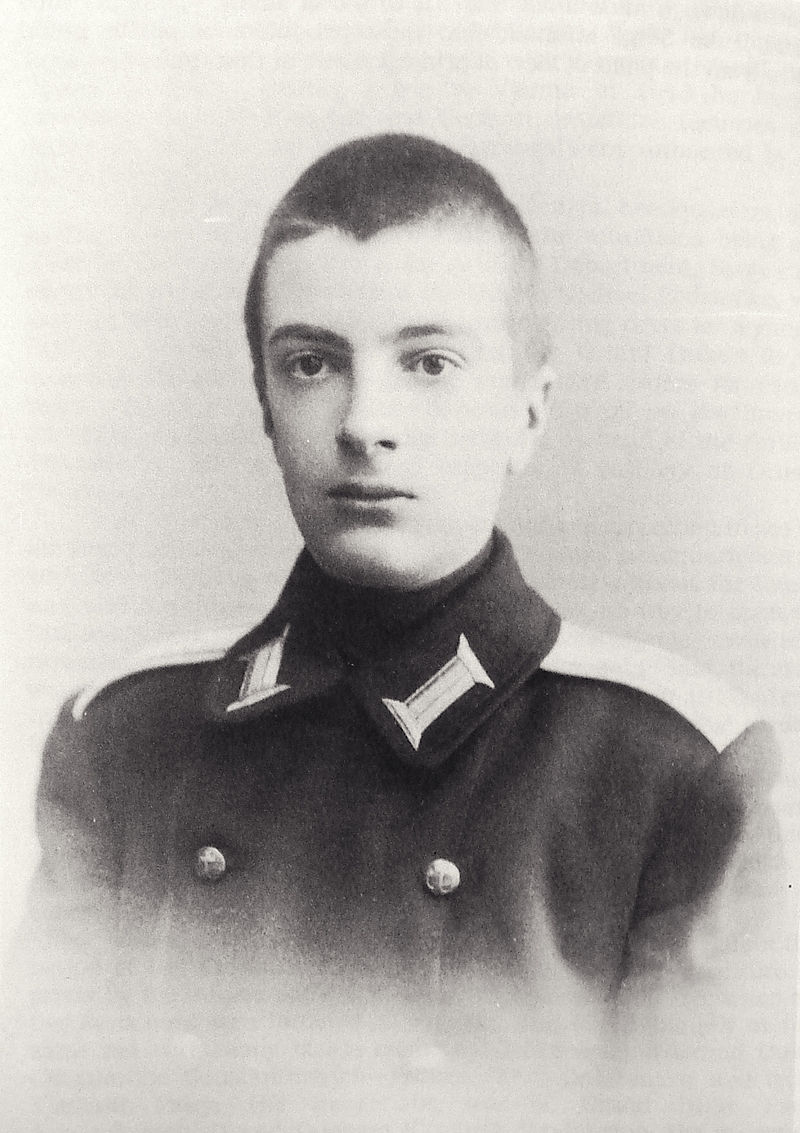
- Born: December 28, 1875 in Tiflis, Tiflis Governorate, Russian Empire, now in Georgia
- Parents: Grand Duke Michael Nikolaevich of Russia (son of Nicholas I, Emperor of All Russia) and Princess Cecilie of Baden
- Died: March 2, 1895, aged 19, in San Remo, Italy
- Buried: Peter and Paul Cathedral in St. Petersburg, Russia
- Wikipedia: Grand Duke Alexei Mikhailovich of Russia
Alexei had a desire to serve in the Russian Navy. He has almost completed his training when he became ill with tuberculosis. He was sent to San Remo, Italy for its warmer climate but died there.
*********************
Grand Duke George Alexandrovich of Russia

- Born: May 9, 1871, at the Alexander Palace at Tsarskoye Selo outside of St. Petersburg, Russia
- Parents: Alexander III, Emperor of All Russia and Princess Dagmar of Denmark
- Died: July 10, 1899, aged 28, in Abastumani, Georgia, Russian Empire
- Buried: Peter and Paul Cathedral in St. Petersburg, Russia
- Unofficial Royalty: Grand Duke George Alexandrovich of Russia
George was the brother of Nicholas II, Emperor of All Russia. Until Nicholas has a son, George was the heir to the Russian throne. At birth, George was weak and suffered from respiratory issues and for a while, his survival was questionable. In childhood, George’s health was problematic and was a great worry to his mother. In 1890, George and Nicholas went on a nine-month-long trip to India and Japan. However, when they reached Bombay, India, George became ill with acute bronchitis and an issue with one of his legs and was sent back home. The doctors knew that George had tuberculosis but kept referring to a “weak chest” and suggested a change in the climate. George and his mother left for Cannes in the south of France but his condition did not improve.
The doctors then suggested that George should be sent to live in the dry mountain climate of Abbas Touman, a spa town, now Abastumani in the country of Georgia, then in Russia. George’s health never improved and he lived permanently in Abbas Touman. On June 28, 1899, George Alexandrovich suddenly died. He had gone out alone to ride his motorcycle and when he did not return, his staff sent out a search party. George had been found lying on the side of the road, struggling to breathe, with blood oozing from his mouth, by a peasant woman who supported him in her arms until he died.
*********************
Mathilde of Bavaria, Princess Ludwig of Saxe-Coburg and Gotha
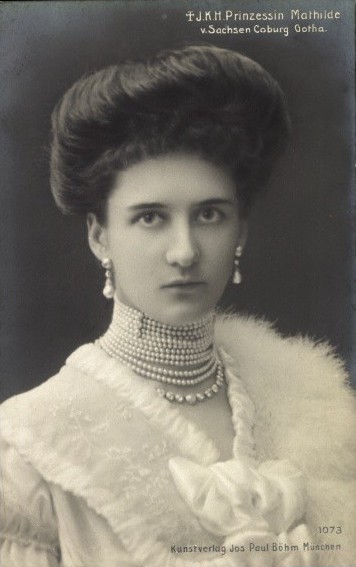
- Born: August 17, 1877 at the Villa Amsee in Lindau, Kingdom of Bavaria, now in Bavaria, Germany
- Parents: King Ludwig III of Bavaria and Maria Theresa of Austria-Este
- Married: Prince Ludwig of Saxe-Coburg and Gotha in 1900
- Died: August 6, 1906, aged 28, in Davos, Switzerland
- Buried: St. Peter and Paul Church in Starnberg, Kingdom of Bavaria, now in Bavaria, Germany
- Wikipedia: Mathilde of Bavaria, Princess Ludwig of Saxe-Coburg and Gotha
Mathilde died from tuberculosis.
*********************
Archduke Ferdinand Karl of Austria

Born: December 27, 1868 in Vienna, Austria
Parents: Archduke Karl Ludwig of Austria and Princess Maria Annunciata of Bourbon-Two Sicilies
Married: Bertha Czuber in 1909, an unequal marriage
Died: March 10, 1915 in Munich, Kingdom of Bavaria, now in Bavaria, Germany
Buried: Untermaiser Maria-Trost-Church in Merano, Austria, now in Italy
Wikipedia: Archduke Ferdinand Karl of Austria
Ferdinand Karl’s mother also died from tuberculosis. (See above.) He was a brother of Archduke Franz Ferdinand whose assassination in 1914 sparked World War I. In 1911 he renounced his rights and titles as a dynast of the House of Habsburg and assumed the name of Ferdinand Burg. By that time, he was already ill with tuberculosis and died four years later,
*********************
Yasuhito, Prince Chichibu of Japan

- Born: June 25, 1902 at Aoyama Detached Palace in Tokyo, Japan
- Parents: Emperor Taishō of Japan and Empress Teimei, born Lady Sadako Kujō
- Married: Setsuko Matsudaira in 1928
- Died: January 4, 1953, aged 50, at Kugenuma Villa in Fujisawa, Kanagawa, Japan
- Wikipedia: Yasuhito, Prince Chichibu
Chichibu was a younger brother of Hirohito, Emperor Shōwa of Japan. In 1940, he was diagnosed with tuberculosis. He was forced to curtail his activities during and after World War II because of his illness. His condition greatly deteriorated in 1953 and he died.
*********************













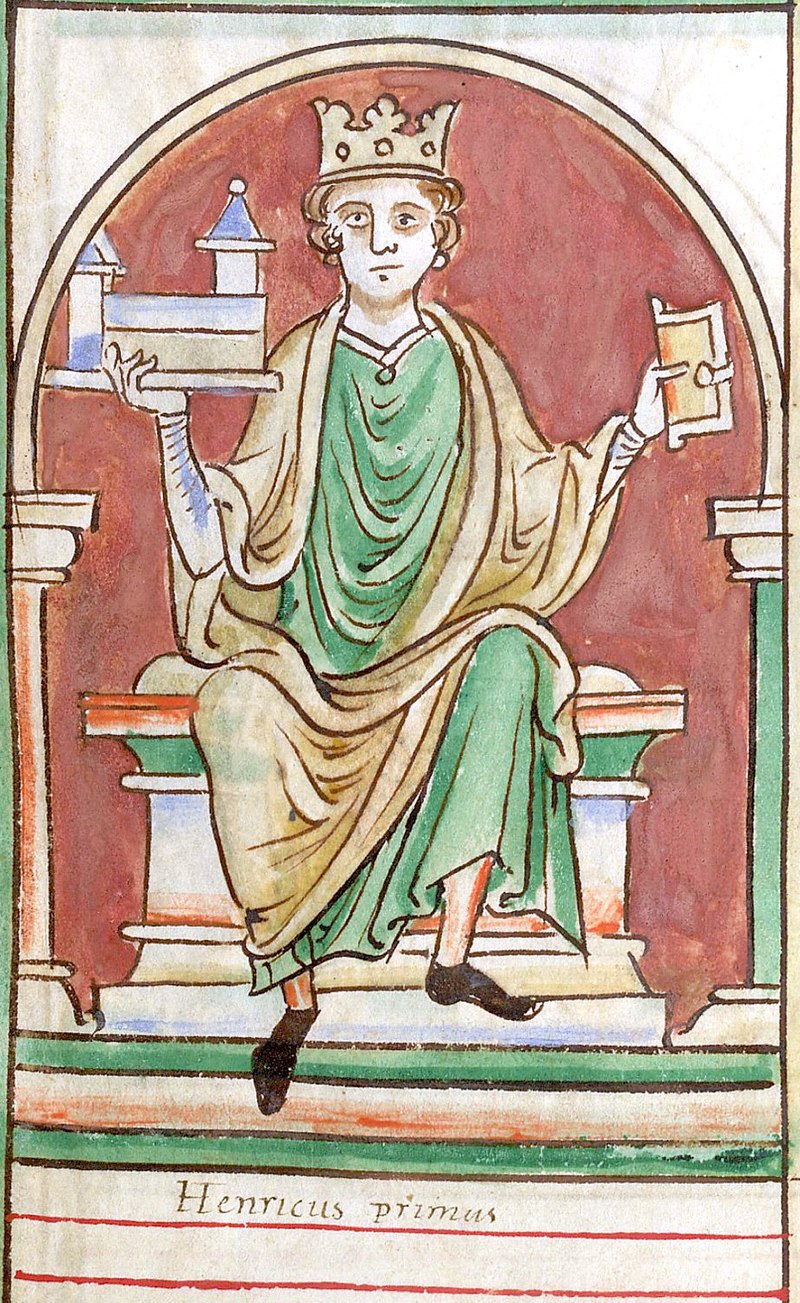







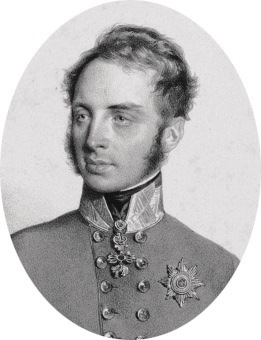












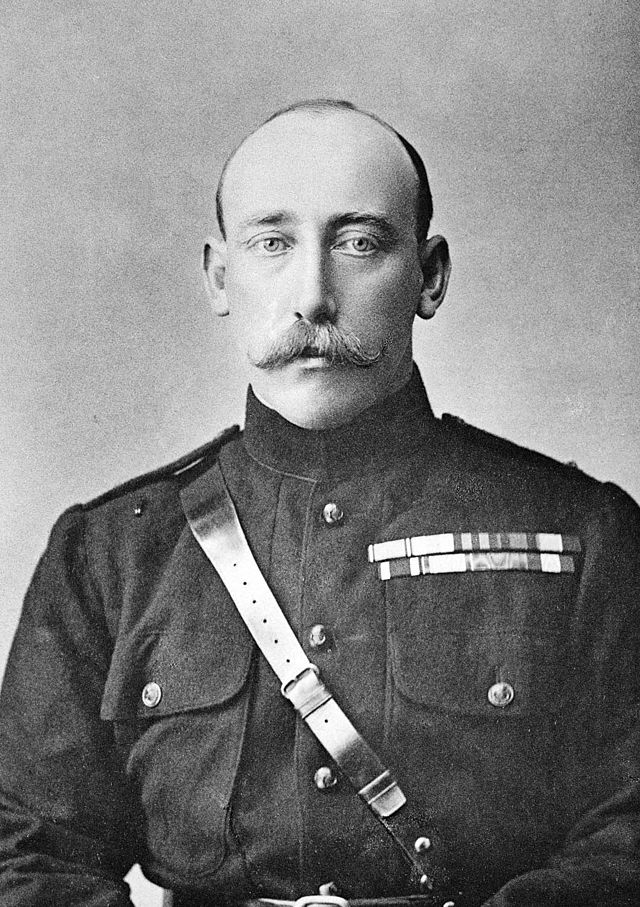

 Mircea with his sister Ileana
Mircea with his sister Ileana











































